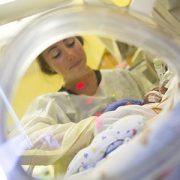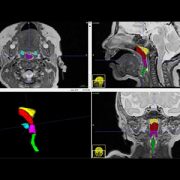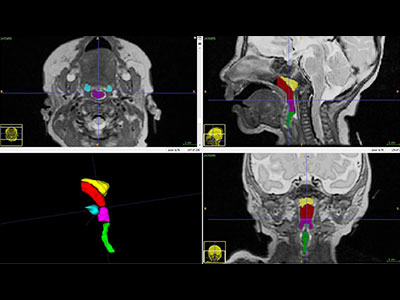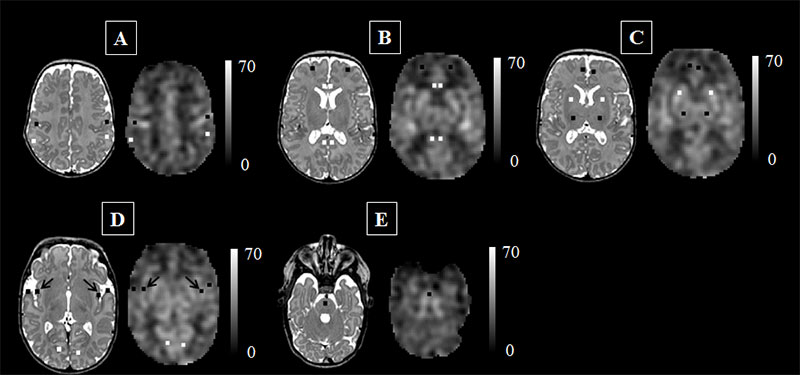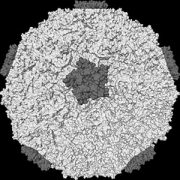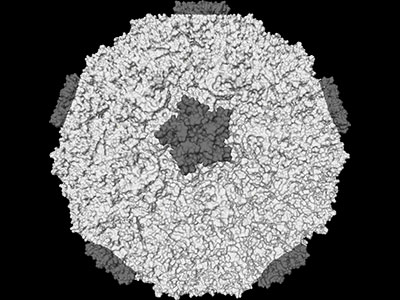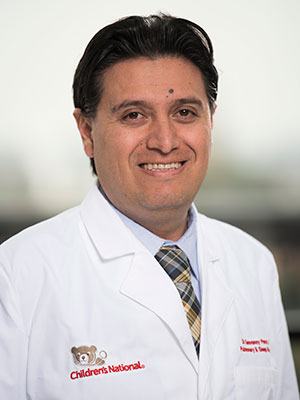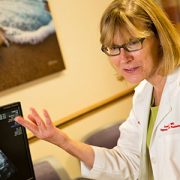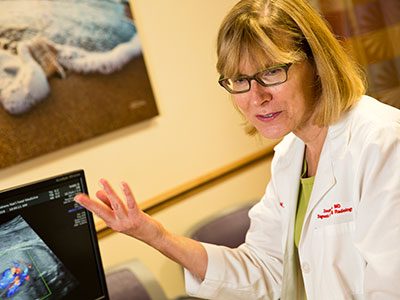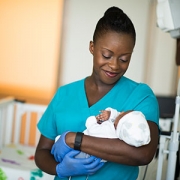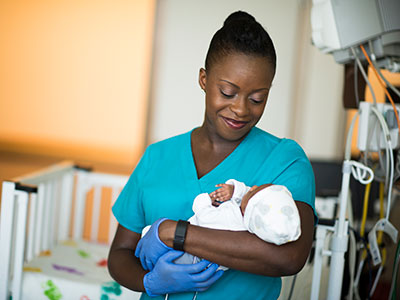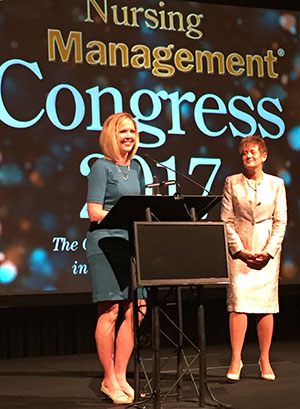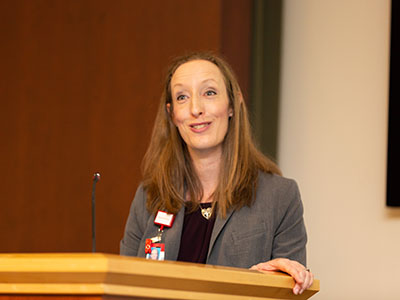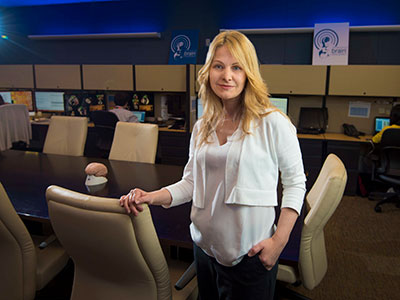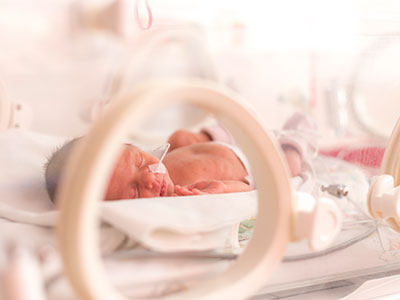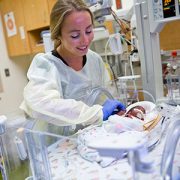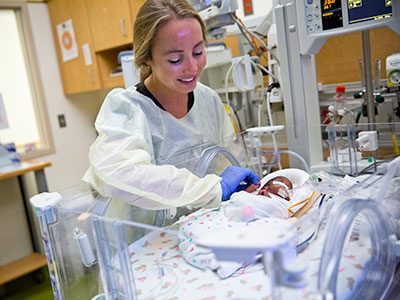
Six companies presenting innovative medical device solutions that address significant unmet needs in pediatric health were awarded a total of $250,000 in grant money yesterday in San Jose, Calif. at the Fifth Annual Pediatric Device Innovation Symposium, organized by the Sheikh Zayed Institute for Pediatric Surgical Innovation at Children’s National Health System.
The “Make Your Medical Device Pitch for Kids!” competition is sponsored by the National Capital Consortium for Pediatric Device Innovation (NCC-PDI), an FDA-funded consortium led by Children’s National and the A. James Clark School of Engineering at the University of Maryland. Four companies were awarded $50,000 each and two were awarded $25,000. The six winners were selected from a field of twelve finalists. A record 98 total submissions from five countries were received for the competition this year.
“To improve care for children, it is imperative that we recognize and encourage relevant new solutions in pediatric medical devices, especially in light of the challenges innovators face in addressing this specialized market,” said Kurt Newman, M.D., president and CEO of Children’s National. “Children’s National is committed to fostering collaboration among innovators, clinicians, policy makers and investors to advance pediatric device development for the benefit of children everywhere.”
This year’s winning innovations receiving $50,000 awards are:
- CorInnova, Houston, Texas – soft robotic, non-blood-contacting biventricular cardiac assist device for the treatment of heart failure in children
- Green Sun Medical, Fort Collins, Colo. – novel device that provides necessary pressure for the correction of spinal deformity while providing real-time feedback to clinicians
- Hub Hygiene and Georgia Institute of Technology, Atlanta, Ga. – low-cost, single-use cleaning technology to prevent central line-associated blood stream infections (CLABSI), a hospital-acquired infection by pediatric ICU patients
- NAVi Medical Technologies, Houston, Texas – device to provide accurate information about the localization of an umbilical venous catheter (UVC) used in critically-ill newborns to reduce the risk of catheter malposition
Winning innovations receiving $25,000 awards are:
- Prapela, LLC, Boston, Mass. – novel “baby box” that will allow for a non-pharmacological approach to help drug-exposed infants relax and sleep during withdrawal and post-withdrawal care
- X-Biomedical, Inc., Philadelphia, Pa. – portable surgical microscope for use in surgeries for treatable causes of blindness in low-income countries and under-resourced setting
“We are honored to recognize these outstanding innovations with this funding,” said Kolaleh Eskandanian, Ph.D., executive director of the Sheikh Zayed Institute and NCC-PDI. “We are even more excited about welcoming this new cohort of companies to our family of pediatric device startups and entrepreneurs. Together we can move the needle a bit faster and safer to bring pediatric products to market.”
She added that in addition to the financial support and consultation services through NCC-PDI, the awardees can leverage the validation received through this highly competitive process to raise the additional capital needed for commercialization. Since inception in 2013, NCC-PDI has supported 67 pediatric devices and the companies and research labs owning these devices have collectively raised $55 million in additional funding.
The twelve finalists each made five-minute presentations to the symposium audience and then responded to judges’ questions. Finalists also included Anecare, LLC, Salt Lake City, Utah; ApnoSystems, Buenos Aires, Argentina; Deton Corp., Pasadena, Calif.; Kite Medical, Dublin, Ireland; Moyarta 2, LLC, The Plains, Va.; and Oculogica, Inc., New York, N.Y.
Serving on the distinguished panel of judges were Susan Alpert, M.D., of SFA Consulting, a former director of the FDA Office of Device Evaluation and former senior vice president and chief regulatory officer of Medtronic; Charles Berul, M.D., co-director, Children’s National Heart Institute; Andrew Elbardissi, M.D., of Deerfield Management; Rick Greenwald, Ph.D., of the New England Pediatric Device Consortium (NEPDC); James Love, J.D., of Oblon; Josh Makower, M.D., of NEA; Jennifer McCaney, Ph.D., of MedTech Innovator; Jackie Phillips, M.D., of Johnson & Johnson; and Tracy Warren of Astarte Ventures.
The pitch competition is a highlight of the annual symposium organized by the Sheikh Zayed Institute at Children’s National, designed to foster innovation that will advance pediatric healthcare and address the unmet surgical and medical device needs for children. New this year, the symposium co-located in a joint effort with The MedTech Conference powered by AdvaMed, the premier gathering of medtech professionals in North America.
Keynote speakers at the event included Daniel Kraft, M.D., faculty chair of Medicine & Neuroscience, Singularity University and executive director, Exponential Medicine; Vasum Peiris, M.D., chief medical officer, Pediatrics and Special Populations, FDA; and Alan Flake, M.D., director of Center for Fetal Research, Children’s Hospital of Philadelphia.
Panel discussions focused on gap funding for pediatric innovation, the journey from ideation to commercialization, and the pediatric device needs assessment in the future regulatory environment.




